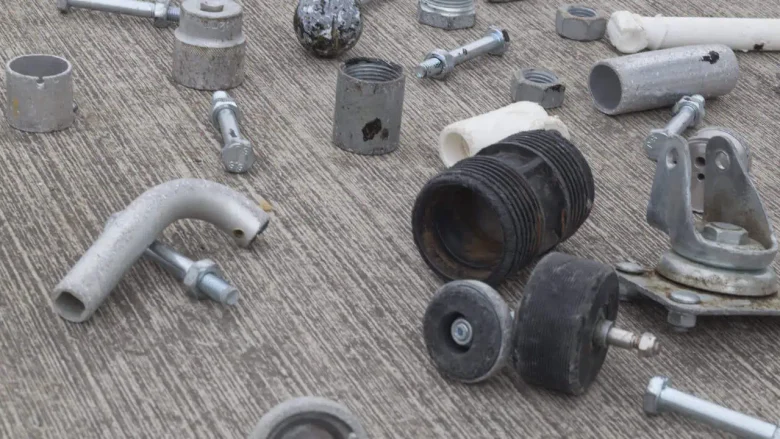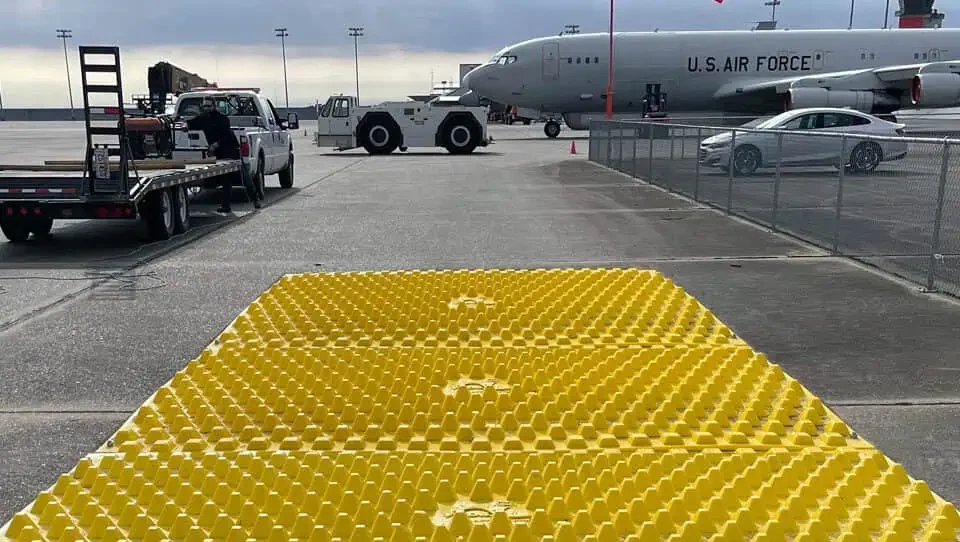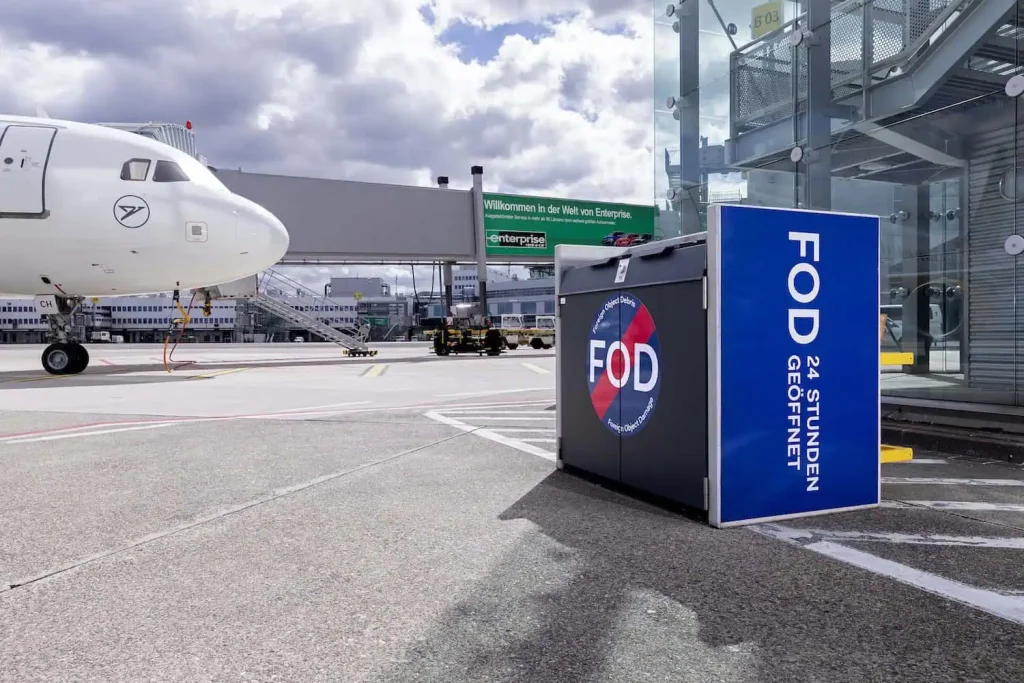If you’re standing in front of an aircraft with its engines running, you have officially become FOD! Yes, you heard it right; humans can be Foreign Object Debris too.
What are fod in aviation?
If you are more into the aviation or aerospace industry, you might have heard about Foreign Object Debris (FOD). An FOD is any particle, substance, animal, or human that lies in a place where it’s not supposed to be. While FOD sounds less threatening, it is a silet killer lurking across all operating areas within an airport.
In aviation, we can find a plethora of FOD as such:
Detached particles from airplanes
Luggage tags and luggage parts
Damaged pavement blocks
Polythene bags and other types of bags
Spilled liquids: engine oil, fuel, and chemicals
Ice, hail, and sand
Coins
Animals: birds, stray animals, and wildlife
Humans
These FODs can cause damages to operating aircraft or working personnel.

The impact of FOG towards the industry
According to the FAA, global FOD-related accident costs can be as high as $22.7 billion. This is 0.65% of the total GDP contribution of the entire aviation industry. Since this represents only the direct costs, the indirect costs could be substantially higher.

When going down to the airlines, foreign object damages caused to the aircraft, equipment, and personnel are a huge burden. It affects turnaround times, aircraft ground times, and employee airside safety. According to research conducted by Cleary & Dolbeer, an airline loses 173 hours for the downtime repairs and $147,000 of monetary loss per accident. Loss of flying hours costs an airline millions of dollars. The United States civil aviation industry loses 118,663 hours and $100.58 million per year, which is only attributed to the reported 20% of the FOD damages. If the calculations were done for 100% of accidents, the cost would be 593,317 hours and $502.92 million, which is detrimental to the whole aviation industry.
Foreign object debris or foreign object damage?
In some resources, damage caused by the foreign object debris is termed as Foreign Object Damage, where the same acronym is used. It’s quite straightforward to use the acronym FOD for both terms, either its foreign object debris or foreign object damage.
Well-known foreign object damages
Here are some accidents involving foreign object debris. These accidents portray the real dangers associated with FOD.
Air France Flight 4590: A titanium strip fitted to the engine cowl (which is the FOD in this case) from a McDonnell Douglas DC-10 operated by Continental aircraft had fallen on the runway during the takeoff run. Concorde ran over the strip during the takeoff run and punctured a tire, releasing a chunk of rubber rocketed towards the aircraft’s fuel tanks. The impact didn’t rupture the tank but created a shock wave strong enough to breach another tank at its weakest point. It took just a second to make the flying aircraft a flying fireball. All onboard died from the accident. This particular accident became an impetus for terminating the Concord operation.
US Airways Flight 1549: During the initial climb of the US Airways A320, a flock of Canada Geese was struck into the engines. Engine restart efforts were not successful, and due to the extremely low altitude, pilots had to ditch the aircraft on to the Hudson River. There were no fatalities. While the exceptional airmanship of the pilots handled the situation, this particular incident could have turned into another tragedy attributed to FOD.
How they affect military aviation
Similarly, the military aviation is also pretty much concerned about the FOD. The impact of FOD becomes more significant in military aviation due to their nature of operations. They operate fighters like the F-35B Lightning II and AV-8B Harrier, which are more prone to FOD due to their specialized flight characteristics. In addition, all the aircraft, including the large aircraft like the KC-10 Extender and C-5 Galaxy, are not cruise-oriented like the commercial aircraft and inherit a higher runway exposure, elevating possibilities for FOD-related accidents. Thus, the military takes FOD-related issues seriously.

FOD control: removal and detection
Airports all around the globe have implemented diverse methods to tackle FOD-related issues. Here are the widely adopted methods.
Airport runway sweepers: sweeping can be performed either manually by brooms or by airside sweepers. So far, airside sweepers are the most effective way of removing FOD; they are more convenient to deploy in any area: runways, taxiways, apron, and bridge. Apron and bridge areas are more vulnerable to collecting FOD as more Ground Support Equipment (GSE) is positioned in these areas. Apart from that, minor maintenance activities and aircraft servicing activities are also undergoing in these areas.
Magnetic bars: A suspended magnetic bar fitted to a towing vehicle can be used to collect metallic FOD.
Rumble strips: When a vehicle is driven over a rumble strip, it can dislodge metallic FOD adhered to the undercarriage. Rumble strips are placed in transition areas from landside to airside.
Automatic FOD detection systems: State-of-the-art automatic FOD detection means are utilized to detect FOD automatically and to generate alerts. They have high-resolution cameras, thermal detectors, and millimeter-wave radars to detect FOD on runways and critical operating areas. Automatic FOD detection plays an imperative role in identifying FOD in low visibility conditions and deteriorating weather conditions. Automatic detection can minimize the risk of runway incursions by minimizing the use of external vehicles on runways.
Wildlife management: Mitigating wildlife attractants within the airport is found to be the most effective way of restricting wildlife entry into the airports. In addition, installing wildlife chase-away systems that use audio deterrents such as propane cannons and ultrasonic devices can be implemented. Visual deterrents such as different-shaped objects and laser beams can be used to chase away wildlife and mitigate related FOD damages.
Fencing: A perimeter fence is used to minimize the entry of wildlife into the airport premises. Wind barriers and netting are also effective at containing airborne FOD.
FOD containers: FOD containers placed at each gate can be used to dispose of any foreign object debris. Apart from that, a waist pouch is also an acceptable way to collect FOD on the apron and engine run-up areas. Uncontrolled FOD containers could be an FOD source themselves. A proper analysis of collected FOD could give valuable directions on finding the FOD sources.
Awareness programs for the airside workers: All the employees attached to the airside should undergo a proper training program on FOD. Identification of FOD, proper disposal of FOD, and FOD generation mitigation are the key areas of a training program.







Construction activities taking place within the airport can generate various types of foreign object debris. Outside contractors working on the site can be FOD themselves as they lack awareness of airside operations. Raw materials and construction equipment should be placed covered or tangled to avoid becoming airborne due to wind.
What should you do if you find FOD?
Keep an eye for the FOD, which is a responsibility of all personnel working in an airport. If you happen to find an FOD, dispose it immediately and inform the relevant authorities to look further for FOD-generating sources. When disposing, make sure to dispose it correctly; incorrectly disposed FOD can create more danger.
It’s quite clear that Foreign Object Debris is a key concern in aviation, and damages caused by the FOD can cost lives and millions of dollars. Even though dedicated people are assigned to fight with FOD, it’s everyone’s responsibility to keep an eye on the FOD during work.



Leave a Reply